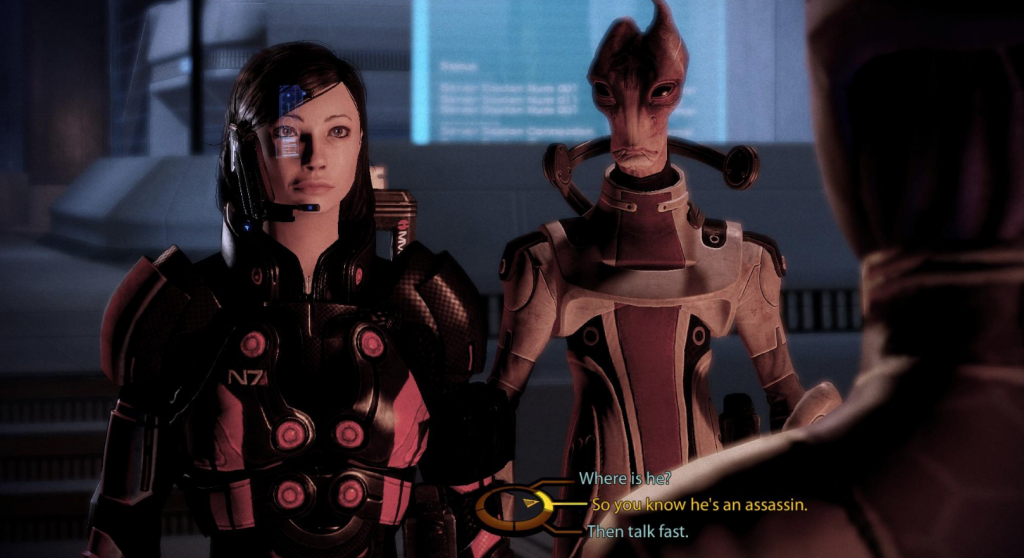
Chopping down dialogue trees
By Adam Tatelman, Arts Editor
Many video games concern themselves with creating an avatar for the player, usually by offering some level of customization in the areas of character appearance and skill specialization. Most often, these games will allow the player to choose between different dialogue options when in conversation with other characters. On paper, this seems like a great idea—giving the player a wide range of potential responses allows them to further shape their character and the surrounding narrative. However, this is often handled in a stunningly amateurish way, counter-intuitively wrecking player immersion through lack of clarity.
The idea of dialogue trees is actually older than most people think. Isometric top-down RPG’s like the original Fallout, Baldur’s Gate, and Planescape Torment offered many and varied dialogue choices in virtually every interaction. This was much easier to accomplish because these games mostly used text boxes instead of voice work. The text boxes had room to show exactly what words would come out of the player character’s mouth for each option. This allowed players to weigh their options very carefully, and select their options according to the
The problem with modern dialogue trees in fully-voiced RPG titles like Mass Effect, Alpha Protocol, or Fallout 4 is that there are no longer text boxes to show players exactly what each response will be. Instead, players are left to intuit the general tone of the response through general one-sentence summaries. This often leads to players misunderstanding the content of an option, which results in an out-of-character action or sentiment that runs totally contrary to the character archetype the player is trying to imitate.
Say you are roleplaying a married soldier. You miss your wife, and you are lonely. You strike up a friendship with a soldier of the opposite sex, choosing the dialogue options you think sound most friendly. To your surprise, the other soldier thinks you’re hitting on her. You hadn’t meant for that, so you choose the dialogue option that reads “I’m married,” only for your character to call the other soldier a trollop and tell her to go trolling elsewhere, along with a bunch of screed you never intended to say. Now that character will hate you for the rest of the game. Poor communication kills, it seems.
Another immersion-breaking fault found in real-time, fully voiced dialogue exchanges is the way characters stare blankly into space while waiting for player input to cue the next line. This looks very robotic, even though these are supposed to be human beings in conversation. Having the characters do stuff while they talk would go a long way towards making them seem more believable. The soldiers, for instance, might be cleaning their weapons during conversation. This sense of movement can keep the characters from being static.
The difficulty of writing dynamic characters who are subject to the will of the player is their inevitable lack of consistency. This can easily result in nonsensical character arcs. Making an open-ended free-roaming RPG can kill pacing to begin with. Having a totally ambiguous main character who can flip-flop on any subject at any time makes it seem as if he has no character at all, rendering most of the plot an exercise in futility because it must carry on to the end regardless of the supposed input the player has.
This is not to say that all storytelling in gaming should be linear. There is certainly a place for customizable character arcs in gaming. However, they could be much more functional if some of the old elements were reintroduced, allowing more specificity in character choice rather than forcing players to guess their way through generalities.
